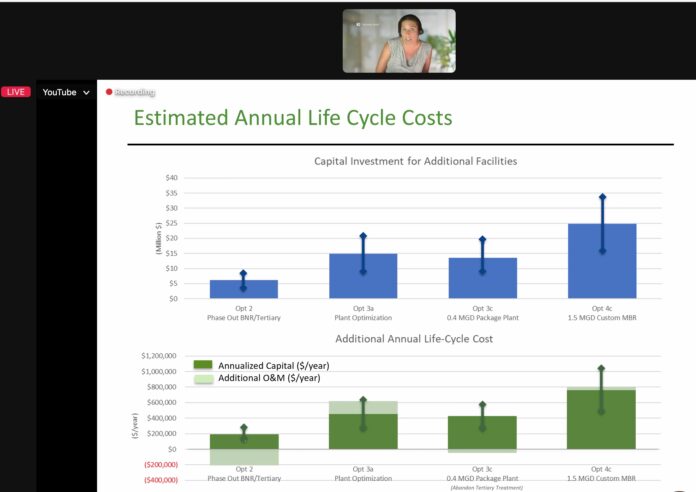
Last week, Scotts Valley held the unboxing of the $79,873 wastewater study it ordered for itself from Kennedy/Jenks Consultants Inc., during its regularly scheduled City Council meeting on Aug. 17.
But unlike a small gadget shipped from Amazon, what the elected officials do with the report’s findings will have a massive impact for years to come—not just on local voters, but on area municipalities, park and golf course users, as well as the surrounding environment.
The plant, built in 1964 and upgraded multiple times over the decades, can process 1.5 million gallons of wastewater a day.
It deals with the dirty water that flows down the pipes from sinks and bathtubs, as well as the excrement sent by toilets, and sends recycled water to local schools, residential areas and parks.
But the older it gets, the more it costs to maintain. Plus, Scotts Valley has been monitoring new environmental and legal rules from Sacramento on how to discharge or reuse water.
The risks of running afoul—through negligence or equipment failures—are immense for California’s cities. For instance, wealthy Southern California enclave Laguna Beach agreed to pay a $1.5 million fine following a 2019 spill of 1.4 million gallons of raw sewage. And more than 100 people living in the El Segundo area filed a lawsuit against Los Angeles after a system backup caused an emergency discharge of more than 17 million gallons of sewage into Santa Monica Bay, last year.
Scotts Valley is worried its current plant won’t be able to reduce nitrogen to safe levels mandated by the state.
Under Scotts Valley’s previous city manager, Tina Friend, the City decided to embark on a costly upgrade process, beginning with a third-party overview—the one council took last week.
The analysis looked at eight options, each with different levels of practicality, safety impacts, costs and effect on in-place contracts. The choices included everything from a $13.2 million decommissioning process that would eliminate operating costs but involve purchasing $7 million worth of capacity from the City of Santa Cruz, to a $35 million upgrade that would use UV and chlorine disinfection in a single system and create a sustainable supply of water.
The options fell into three different categories: (1) Phasing out the entire plant or at least the recycled water part; (2) Doing just enough to maintain current agreements while falling into line with updated standards; (3) Improving the plant to set Scotts Valley up for the future.
After a full-day workshop with wastewater staff, the consultant decided to cross off several options.
Council heard decommissioning the plant wouldn’t make sense, not just due to high costs—such as paying Santa Cruz to handle Scotts Valley’s wastewater and breaking the recycled water agreement with Pasatiempo Golf Course—but also because it would run contrary to the City’s mission.
Other possibilities, such as keeping the existing tertiary treatment set-up in place and abandoning tertiary treatment altogether, were nixed because they’d be too challenging to implement, would cost too much for too few results or lead to other problems.
The City has already budgeted $100,000 this year to continue studying the issue—as well as $50,000 next year—as part of a five-year wastewater plan.
Council voted to continue studying options through the fall, in the hopes of coming to a decision sometime next year.












